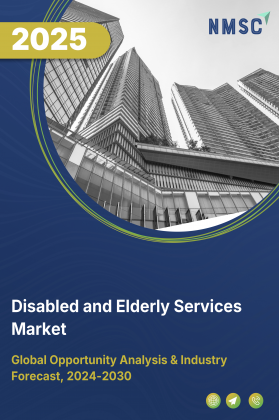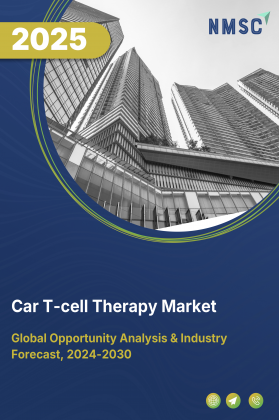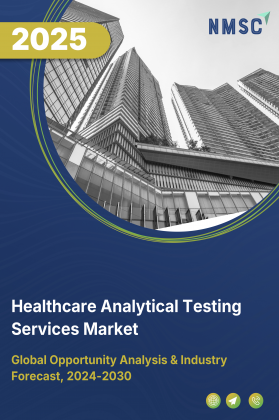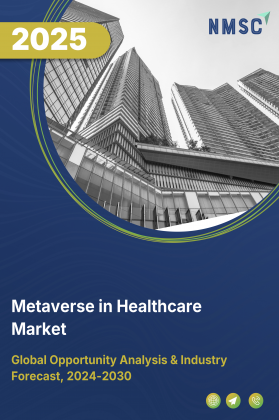
Metaverse in Healthcare Market by Component (Software, Hardware, Services), By Technology (Augmented Reality / Virtual Reality, Artificial Intelligence, Blockchain Technology and Others), By Devices (VR Headsets, AR Devices, Mixed Reality), By Application (Telehealth, Medical Training and Education, Drug Discovery and Personalized Medicine and Others), By End User (Clinical Research, MedTech Companies, Healthcare Providers and Others) – Global Analysis & Forecast, 2025–2030
Industry Outlook
The global Metaverse in Healthcare Market size was valued at USD 14.56 billion in 2024, and is expected to be valued at USD 18.91 billion by the end of 2025. The industry is projected to grow, hitting USD 100.34 billion by 2030, with a CAGR of 35.94% between 2025 and 2030.
The metaverse in healthcare market is experiencing rapid transformation, driven by the integration of extended reality (XR) technologies, including virtual reality (VR), augmented reality (AR), and mixed reality (MR). These immersive technologies are enhancing medical education, professional training, and patient care by enabling realistic simulations that help healthcare professionals visualize complex anatomical structures and clinical procedures. Beyond education, XR applications are being used in therapeutic interventions, rehabilitation programs, and patient engagement initiatives, creating scalable, evidence-based solutions that improve both training outcomes and clinical effectiveness across the healthcare ecosystem.
Simultaneously, the growing demand for remote healthcare solutions is further propelling market growth. Immersive technologies allow healthcare providers to deliver virtual consultations, therapy sessions, and support programs, extending access to patients in remote or underserved regions. By enabling interactive, technology-driven healthcare experiences, the metaverse is enhancing patient engagement, improving care accessibility, and fostering more efficient and equitable delivery of medical services. These trends position immersive virtual platforms as a key component of the evolving digital health landscape.
What are the key trends in metaverse in healthcare industry?
How is the metaverse in healthcare market accelerating clinical training and surgical planning?
Clinical adoption of extended reality (XR) a core component of the metaverse in healthcare market is rapidly shifting from experimental use to mainstream medical application. Recent reviews and clinical trials conducted between 2021 and 2024, along with NHS evidence briefs, indicate that immersive AR/VR technologies are proving highly effective in medical education, surgical planning, and simulation-based training. This transformation allows healthcare professionals to gain hands-on experience in virtual environments, reducing dependency on physical cadavers and lengthy apprenticeship models while significantly improving procedural accuracy and skill retention. Within the metaverse in healthcare ecosystem, this trend highlights an accelerating demand for evidence-based, interoperable XR platforms that seamlessly integrate with hospital learning management and credentialing systems. For companies, the key opportunity lies in developing validated, curriculum-driven virtual training modules supported by real-world clinical data. Prioritizing regulatory-aligned validation studies, interoperability, and subscription-based models offering continuous updates and outcome analytics will position developers to meet rising institutional demand. As healthcare organizations increasingly value immersive, data-backed solutions, companies that embed these strategies will lead the next phase of growth in the global market.
What regulatory shifts are shaping the metaverse in healthcare market trends and how should companies respond?
Regulatory bodies are increasingly shaping the direction of the metaverse in healthcare market by defining how AR/VR and immersive tools fit within existing medical-device frameworks. The U.S. FDA and other health authorities have released detailed guidance and educational resources outlining how such technologies will be assessed for safety, intended use, data protection, and clinical performance. This growing regulatory clarity is helping reduce investment uncertainty and encouraging greater adoption of metaverse-based healthcare solutions. However, it also raises compliance expectations, requiring companies to demonstrate robust standards in human factors engineering, cybersecurity, data integrity, and clinical validation. For organizations operating in the market, regulatory preparedness must be treated as a core part of product development strategy rather than a final step. Aligning early with device classification requirements, incorporating user testing and privacy safeguards, and ensuring transparent audit trails significantly accelerate approval timelines and strengthen trust with both regulators and healthcare institutions. By embedding compliance and clinical evidence generation into their innovation process, companies gain a competitive edge and establish credibility in this rapidly expanding global market.
How is Virtual Reality Driving Immersive Medical Education and Training in Healthcare?
Virtual reality (VR) is rapidly becoming a key growth driver in the metaverse in healthcare market demand, especially in the realm of medical education and anatomy training. Research examining VR-based anatomy teaching has shown that immersive virtual environments significantly improve comprehension of complex anatomical structures, enhance spatial understanding, and increase learner engagement compared to traditional cadaveric or textbook-based approaches. This demonstrates that VR is moving beyond experimental use to become a scalable, evidence-backed solution for training the next generation of healthcare professionals.
This chart displays the Technology Readiness Index for six Asia-Pacific countries in 2024, revealing that China (65.3) and Japan (63.8) lead the region, while India (52.6) lags behind. This index directly impacts the market by identifying which countries possess the necessary digital infrastructure, skills, and regulatory environment for rapid adoption. Nations with higher scores, like China, Japan, South Korea, and Australia, are primed for deploying advanced metaverse healthcare applications such as telemedicine and VR rehabilitation. Conversely, lower-scoring countries like India and Indonesia represent significant future growth markets, but their development will be contingent on first improving their underlying technological foundation.
What are the key market drivers, breakthroughs, and investment opportunities that will shape the metaverse in healthcare industry in next decade?
The global metaverse in healthcare market is experiencing rapid growth, driven primarily by the integration of extended reality (XR) technologies, including virtual reality (VR), augmented reality (AR), and mixed reality (MR). These immersive technologies are transforming medical education, training, and patient care by enabling realistic simulations that help healthcare professionals visualize complex anatomical structures and clinical procedures. Beyond education, XR applications are improving therapeutic outcomes, supporting rehabilitation programs, and enhancing patient engagement. By creating interactive and scalable healthcare solutions, the metaverse is redefining how care is delivered, making training more effective and clinical interventions more precise across the healthcare ecosystem.
At the same time, the rising demand for remote healthcare solutions is further accelerating market adoption. Immersive technologies allow healthcare providers to offer virtual consultations, therapy sessions, and remote monitoring, extending care to underserved or geographically isolated populations. While cost and infrastructure requirements remain challenges, investments in scalable XR platforms, collaborative programs, and digital healthcare initiatives are expanding access and improving efficiency. Collectively, these trends highlight the metaverse’s potential to enhance healthcare delivery, support professional training, and foster more equitable, technology-driven solutions worldwide.
Growth Drivers:
How is the increasing adoption of extended reality (XR) technologies transforming healthcare education and training?
The integration of extended reality (XR) including virtual reality (VR), augmented reality (AR), and mixed reality (MR) is emerging as a major growth driver in the metaverse in healthcare market, particularly in medical education, training, and patient care. According to a comprehensive review published by the National Institutes of Health (PMC), XR technologies enhance learning outcomes by providing immersive simulations that allow medical students and professionals to visualize complex anatomical structures and clinical procedures, improving comprehension and retention. Beyond education, the U.S. Department of Veterans Affairs has applied VR-based therapies for the rehabilitation of veterans with spinal cord injuries, showcasing the metaverse’s practical impact on patient care. These applications highlight how XR within the metaverse ecosystem is transforming healthcare delivery, creating scalable, evidence-based solutions that improve both training and therapeutic outcomes across the sector.
What role does the increasing demand for remote healthcare solutions play in the expansion of the metaverse in healthcare?
The rising demand for remote healthcare solutions is driving significant growth in the metaverse in healthcare market, particularly in areas such as mental health and virtual care delivery. The U.S. Department of Health and Human Services has invested USD 75 million to develop next-generation digital platforms that support remote and metaverse-based mental health assessments and interventions, highlighting the recognized need for accessible care. By leveraging immersive technologies like VR and AR, healthcare providers deliver virtual consultations, therapy sessions, and support groups, extending quality care to patients in remote or underserved regions. This trend demonstrates how the metaverse is enabling scalable, technology-driven healthcare solutions that improve accessibility, patient engagement, and outcomes, positioning immersive virtual platforms as a central component of the evolving digital health ecosystem.
Growth Inhibitors:
How does the high cost of implementation impede the widespread adoption of metaverse technologies in healthcare?
The substantial cost of implementation remains a key inhibitor for the metaverse in healthcare market, potentially slowing the adoption of immersive technologies like VR and AR across medical institutions. A systematic review published by the National Institutes of Health highlights that initial setup costs for VR training programs are significant, for instance, one study reported a total implementation cost of USD 25,482, including USD 22,882 in labor and USD 2,600 in non-labor expenses, requiring 655 person-hours (PMC). Similarly, the U.S. Department of Veterans Affairs has invested heavily to expand VR-based rehabilitation therapies across multiple sites (VA News), reflecting the high infrastructure and technology requirements. These financial demands pose challenges for smaller healthcare providers, limiting the scalability and accessibility of metaverse-enabled solutions. Addressing cost-related barriers through funding support, partnerships, or cost-effective platform models will be crucial to accelerate the widespread adoption of metaverse technologies in healthcare.
How the Metaverse Create New Opportunities to Expand Healthcare Access and Equity?
The metaverse in healthcare market presents a significant opportunity to enhance healthcare access and equity, particularly in regions with limited infrastructure. By leveraging metaverse technologies, healthcare providers deliver remote consultations, virtual health education, and professional training programs, effectively overcoming geographical and resource constraints. Immersive tools such as virtual reality (VR) used to train healthcare professionals, while augmented reality (AR) facilitate remote diagnostics and patient monitoring. These applications not only improve the quality and efficiency of healthcare delivery but also expand access to underserved populations. Investing in digital twin infrastructures and scalable immersive platforms offers companies the chance to tap into new markets, drive inclusive healthcare solutions, and support the global transition toward technology-enabled, equitable healthcare systems.
This chart illustrates the AI adoption rate across major economies for 2024, showing the U.S. (45%) and China (39%) as front-runners, while India (28%) trails the group. This rate of AI integration is a critical catalyst for the market, as AI forms the underlying intelligence for immersive environments powering everything from diagnostic avatars and personalized treatment plans to smart patient monitoring. Countries with higher adoption, like the U.S. and China, will likely see accelerated development of sophisticated metaverse healthcare applications, leveraging their strong AI foundations to create more effective and autonomous virtual care systems.
How is the metaverse in healthcare market share is segmented in this report, and what are the key insights from segmentation analysis?
By Component Insights
How is the Metaverse in Healthcare Market Shaped by Component?
Based on component, the market is segmented into software, hardware and services.
The hardware segment refers to the physical devices and equipment that enable immersive, interactive, and virtual healthcare experiences. This includes devices such as VR headsets, AR glasses, mixed reality systems, sensors, and other wearable technologies that support applications like telehealth, surgical planning, medical training, and remote patient monitoring. Hardware forms the foundation for delivering immersive simulations, real-time diagnostics, and interactive patient care, allowing healthcare professionals and patients to engage with virtual environments and digital twins in a seamless and realistic manner. Its development and adoption are critical for the practical implementation of metaverse solutions across the healthcare ecosystem.
The chart illustrates the metaverse in healthcare market by component, showing that software leads the market, followed by hardware and services. This highlights the critical role of immersive applications and AI-driven platforms in enabling virtual training, patient care, and medical simulations, while hardware and services support practical implementation and adoption. The distribution indicates that balanced investment across software, devices, and services is essential to drive innovation, scalability, and sustained growth in the healthcare metaverse ecosystem.
By Technology Insights
Which technology is emerging as the most flexible in the metaverse in healthcare market?
Based on technology, the market is segmented into augmented reality / virtual reality, artificial intelligence and others.
Augmented Reality (AR) and Virtual Reality (VR) technologies enable immersive and interactive experiences that transform how healthcare services are delivered. AR overlays digital information onto the real world, assisting surgeons during procedures, guiding medical training, or providing patient education. VR creates fully simulated environments for applications such as surgical planning, therapy for mental health conditions, and immersive medical education. By integrating AR and VR into healthcare workflows, providers enhance precision, improve patient engagement, and offer innovative training solutions, making these technologies a key driver of the adoption and growth of metaverse-enabled healthcare solutions.
By Application Insights
How is the metaverse in healthcare Market shaped by application segmentation?
Based on application, the market is segmented into telehealth, medical training and institution and others.
Telehealth refers to the use of digital and immersive technologies to provide remote healthcare services and consultations. Through virtual reality, augmented reality, and secure digital platforms, healthcare providers interact with patients in real time, conduct assessments, and deliver care without requiring in-person visits. Telehealth enables improved access to medical expertise, especially for patients in remote or underserved areas, reduces travel and waiting times, and supports continuous monitoring and follow-up. By integrating metaverse technologies, telehealth offers more interactive and engaging patient experiences, enhancing communication, education, and overall quality of care.
By End User Insights
How are end use industry driving the metaverse in healthcare market?
Based on end user, the market is segmented into clinical research, healthcare providers and others.
Clinical research as an end user refers to organizations and institutions that conduct medical and pharmaceutical studies to develop new treatments, therapies, and healthcare solutions. By leveraging metaverse technologies such as virtual reality, augmented reality, and digital twins, clinical research teams simulate experiments, monitor patient responses remotely, and collect real-time data more efficiently. These immersive tools enhance the accuracy of trials, improve participant engagement, and streamline study protocols, enabling faster and more cost-effective development of drugs and medical interventions while maintaining high standards of safety and compliance.
Regional Outlook
The market is geographically studied across North America, Europe, Asia Pacific, Latin America and the Middle East & Africa and each region is further studied across countries.
Metaverse in Healthcare Market in North America
A key driver for the metaverse in healthcare market growth in North America is the proactive adoption and expansion of immersive technologies by federal agencies. According to a 2024 U.S. Government Accountability Office (GAO) report, 17 of 23 federal civilian agencies engaged in activities involving immersive technologies during fiscal years 2022 and 2023. In healthcare, agencies like the Department of Veterans Affairs are leveraging virtual reality and other immersive solutions for clinical staff training in mental health treatment, physical rehabilitation, and pain management, demonstrating the potential of metaverse-based applications.
Looking forward, 16 agencies plan to broaden their use of immersive technologies between 2024 and 2028. These expansions include applications in data visualization and analysis, design and planning, public outreach, and remote collaboration. Such initiatives are expected to accelerate the adoption of metaverse solutions in healthcare, foster innovation in clinical training and patient care, and strengthen the ecosystem supporting immersive healthcare technologies in North America.
Metaverse in Healthcare Market in the United States
The integration of blockchain technology and artificial intelligence (AI) is driving innovation in the metaverse in healthcare market by enabling the development of secure, interoperable, and trustworthy digital healthcare environments. According to a 2024 study, the combination of blockchain and explainable AI ensures that sensitive patient data and virtual healthcare interactions are protected against tampering while remaining transparent and auditable. This technological synergy supports the creation of virtual hospitals, patient digital twins, and AI-powered clinical simulations within metaverse platforms, enhancing medical training, remote consultations, telemedicine, and patient engagement. By ensuring robust data security and facilitating seamless digital collaboration, blockchain and AI are accelerating the adoption of immersive metaverse solutions across U.S. healthcare providers, research institutions, and medical education centers, ultimately contributing to improved healthcare delivery and outcomes.
Metaverse in Healthcare Market in Canada
A key driver for the growth of the metaverse in healthcare market in Canada is the nation’s strong emphasis on advancing patient-centered care through immersive technologies. Healthcare providers across the country are increasingly adopting virtual reality (VR) and augmented reality (AR) solutions to enhance patient education, engagement, and rehabilitation. Through these immersive environments, hospitals and clinics deliver more interactive and personalized treatment experiences, simulate complex medical procedures for training and understanding, and provide controlled virtual settings for mental health therapies. This focus on improving patient outcomes and enabling tailored healthcare experiences is accelerating the integration of metaverse-based solutions, driving innovation and supporting the digital transformation of Canada’s healthcare ecosystem.
Metaverse in Healthcare Market in Europe
A key driver for the growth of the market in Europe is the European Union’s focused investment in digital health innovation and infrastructure. Through funding programs such as EU4Health, the Digital Europe Programme, and Horizon Europe, the EU is enabling the advancement of healthcare systems across member states. These initiatives support the integration of virtual reality (VR), augmented reality (AR), and other immersive technologies into healthcare, promoting the creation of interoperable digital health platforms and fostering innovation in patient care, medical training, and health data management. By driving these efforts, the EU is accelerating the adoption of metaverse-based healthcare solutions, facilitating virtual hospitals, AI-powered clinical simulations, and remote healthcare services, and positioning Europe as a leader in the digital transformation of healthcare.
Metaverse in Healthcare Market in the United Kingdom
The growth of the metaverse in healthcare market in the UK is being propelled by initiatives such as the National Digital Twin Programme (NDTP), which emphasizes standardization, interoperability, and secure deployment of immersive technologies. By creating virtual environments for clinical decision-making, patient simulations, and operational planning, the program allows hospitals and research institutions to implement metaverse-based healthcare solutions with confidence. With a strong focus on accessibility, sustainability, and safety, these initiatives are fostering investment, driving innovation, and accelerating the adoption of virtual healthcare applications, thereby strengthening the UK’s position in the emerging metaverse healthcare ecosystem.
Metaverse in Healthcare Market in Germany
A key driver for the growth of the market in Germany is the country’s emphasis on enhancing medical training and professional education through immersive technologies. Healthcare institutions are increasingly utilizing virtual reality (VR) and augmented reality (AR) to create realistic, interactive simulation environments for medical students and practitioners. These virtual platforms enable hands-on practice of complex procedures, clinical scenario simulations, and collaborative learning without any risk to patients. By prioritizing the modernization of medical education and training through immersive experiences, Germany is cultivating an ecosystem that supports the widespread adoption of metaverse-based healthcare solutions in hospitals, research centers, and medical schools, thereby driving innovation and improving the quality and efficiency of healthcare delivery.
Metaverse in Healthcare Market in France
A key driver for the growth of the metaverse in healthcare sector in France is the country’s emphasis on fostering medical collaboration and research through immersive virtual environments. By utilizing technologies such as virtual reality (VR) and augmented reality (AR), healthcare professionals and researchers engage in remote collaboration, simulate complex clinical procedures, and exchange medical knowledge in real time, overcoming geographical barriers. These virtual platforms enhance knowledge sharing, interdisciplinary teamwork, and innovation in healthcare delivery, thereby promoting the adoption of metaverse-based healthcare solutions across French hospitals, research institutions, and medical centers. This focus on improving research efficiency and collaborative care is driving the expansion and innovation of the metaverse healthcare market in France.
Metaverse in Healthcare Market in Spain
A key driver for the growth of the market in Spain is the country’s targeted investment in immersive technologies to advance healthcare services. Through the Recovery and Resilience Facility (RRF), the Spanish government has dedicated approximately USD 206.5 million to promote the adoption of virtual reality (VR) and mixed reality (MR) across sectors, with a strong focus on healthcare applications. These investments are enabling the development of metaverse-based solutions for medical training, patient rehabilitation, and remote consultations, fostering innovation and digital transformation. By supporting the integration of immersive technologies, Spain is creating a favorable environment for the widespread adoption of metaverse healthcare platforms in both public and private healthcare institutions, driving the expansion of the market.
Metaverse in Healthcare Market in Asia Pacific
A significant driver for the growth of the metaverse in healthcare market in the Asia-Pacific (APAC) region is the expansion of immersive technologies in healthcare education and training. According to the Digital Economy Trends 2025 report, augmented reality (AR) and virtual reality (VR) are increasingly employed for surgical simulations, anatomy education, and patient-specific diagnostics, providing highly interactive and immersive learning experiences. These applications play a vital role in the development of metaverse-based healthcare solutions, enabling healthcare professionals to practice complex procedures virtually, enhance clinical decision-making, and improve patient outcomes. The APAC region’s emphasis on integrating these technologies into medical training is accelerating the adoption of metaverse platforms in hospitals, research centers, and educational institutions, driving innovation and growth in the healthcare market.
Metaverse in Healthcare Market in China
A significant driver for the growth of the market in China is the country’s strong government-led push for digital transformation through the Three-Year Action Plan for the Industrial Innovation and Development of the Metaverse (2023–2025), unveiled by the Ministry of Industry and Information Technology (MIIT) along with other key departments. This comprehensive plan lays out strategic objectives to advance the metaverse industry across multiple sectors, including healthcare, by promoting the integration of immersive technologies such as virtual reality (VR) and augmented reality (AR). In the healthcare context, these initiatives are aimed at modernizing hospitals, enhancing medical training, enabling remote consultations, and improving patient management systems through digital and virtual platforms. By fostering innovation, interoperability, and the adoption of advanced technologies in hospitals and clinics, the government’s action plan is creating a robust ecosystem that accelerates the deployment of metaverse-based healthcare solutions, thereby driving market growth, improving clinical decision-making, and elevating the quality of patient care across China.
Metaverse in Healthcare Market in Japan
A major driver propelling the metaverse in healthcare market in Japan is the nation’s strategic focus on leveraging immersive technologies to transform elderly care and rehabilitation. Facing a rapidly aging population, Japanese healthcare providers are increasingly adopting virtual reality (VR), augmented reality (AR), and AI-powered simulation platforms to enhance physical therapy, cognitive training, and remote patient monitoring. By implementing interactive and engaging virtual environments, hospitals and clinics deliver personalized rehabilitation programs, boost patient adherence to treatment plans, and enable caregivers to track progress more efficiently. This strong emphasis on digital innovation, patient-centered care, and rehabilitation effectiveness is accelerating the integration of metaverse-based healthcare solutions throughout Japan, driving market expansion and elevating the overall quality of healthcare services.
Metaverse in Healthcare Market in India
A key driver fueling the growth of the market in India is the country’s strategic adoption of digital twin and AI-powered platforms through initiatives like the Sangam Digital Twin project. By creating virtual replicas of hospital infrastructure and clinical workflows, healthcare providers simulate complex scenarios, optimize operations, and make real-time decisions that enhance patient care and operational efficiency. These immersive digital environments not only streamline healthcare delivery but also enable predictive planning and resource management, laying the foundation for widespread adoption of metaverse-based healthcare solutions. India’s focus on integrating advanced technologies, improving patient outcomes, and building a robust digital ecosystem is driving innovation and accelerating market growth across the healthcare sector.
Metaverse in Healthcare Market in South Korea
The expansion of immersive technologies in South Korea’s healthcare sector is driving the growth of the metaverse in healthcare market. Hospitals and providers are increasingly implementing virtual reality (VR), augmented reality (AR), and AI-powered platforms to enable remote consultations, manage chronic conditions, and deliver rehabilitation programs within interactive virtual environments. By providing patients with accessible, personalized, and engaging care from home, these technologies improve treatment adherence, patient engagement, and overall healthcare efficiency. This strong emphasis on digital innovation, telehealth, and patient-centered care is accelerating the adoption of metaverse-based healthcare solutions across South Korea, fostering market growth and reshaping healthcare delivery models.
Metaverse in Healthcare Market in Australia
Australia’s focus on leveraging immersive technologies to advance mental health and wellness is boosting the growth of the market. Healthcare providers are increasingly utilizing virtual reality (VR), augmented reality (AR), and AI-powered therapeutic platforms to deliver interventions for conditions such as stress, anxiety, and depression. By offering safe, interactive, and engaging virtual environments, patients access therapy sessions, mindfulness programs, and cognitive behavioral exercises both at home and in clinical settings. This emphasis on patient-centered, digitally-enabled mental health care is accelerating the adoption of metaverse-based healthcare solutions, driving market expansion, fostering innovation, and improving overall healthcare outcomes in Australia.
Metaverse in Healthcare Market in Latin America
Latin America is accelerating the growth of its market through the broader adoption of immersive technologies in smart city and urban planning initiatives. By leveraging metaverse platforms alongside tools like Building Information Modeling (BIM), healthcare systems create virtual replicas of hospitals, patient workflows, and regional healthcare infrastructure. These virtual models enable providers to simulate scenarios, optimize resource allocation, and improve operational efficiency in real time. The integration of metaverse technologies not only enhances healthcare delivery and patient outcomes but also supports strategic planning for public health interventions, positioning Latin America as a growing market for advanced digital healthcare solutions.
Metaverse in Healthcare Market in the Middle East & Africa
In the Middle East and Africa, the growth of the metaverse in healthcare market is being driven by the region’s focus on leveraging digital health technologies to improve healthcare access and service delivery. Governments and healthcare organizations are increasingly adopting telemedicine, mobile health platforms, and virtual care solutions to overcome challenges such as limited access to facilities, shortages of healthcare professionals, and the growing demand for quality care. By integrating immersive technologies like virtual reality (VR), augmented reality (AR), and AI-powered platforms into healthcare services, hospitals and clinics enhance patient engagement, optimize clinical workflows, and support medical training. This emphasis on digital innovation, accessibility, and efficiency is fostering the adoption of metaverse-based healthcare solutions, driving market growth across the Middle East and Africa.
The chart reveals that several major economies, led by Italy and Japan, have over a quarter of their population aged 65 or older, signaling a profound demographic shift. This rapidly expanding elderly demographic directly fuels the metaverse healthcare market by creating an urgent need for scalable, remote care solutions. Technologies like virtual reality for cognitive therapy and pain management, and digital platforms for remote rehabilitation and social connection, are poised to become critical tools for supporting the health and well-being of this aging global population.
Competitive Landscape
Who are the Leading Companies in the Metaverse in Healthcare Market and How are They Competing?
The global metaverse in healthcare market competition is shaped by a combination of established technology leaders and innovative, specialized players. Companies such as Microsoft, NVIDIA, Philips, GE Healthcare lead the market with comprehensive platforms, extensive technological expertise, and strong industry presence. They focus on developing immersive metaverse solutions that enhance patient care, optimize hospital operations, and support applications like virtual clinical trials, surgical planning, and telehealth. Their ability to integrate immersive technologies and advanced analytics helps them maintain market leadership while driving modernization across healthcare systems.
At the same time, agile and innovation-driven companies such as XRHealth, Immersive Touch, 8 Chili Inc, Accuvein, Novarad Corporation, Oodles Technologies, Veyond Metaverse, BioflightVR, and Augmedics concentrate on niche solutions and unique immersive applications. These players accelerate adoption of metaverse technologies in areas such as virtual patient simulations, AR-guided surgery, remote therapy, and predictive care. Their flexibility in responding to technological advancements and clinical needs places competitive pressure on established leaders, ensuring the market continues to evolve toward more immersive, personalized, and technology-driven healthcare solutions.
Market Dominated by Metaverse in Healthcare Giants and Specialists
The metaverse in healthcare market is increasingly shaped by a combination of established industry leaders and specialized innovators. Companies like Microsoft, NVIDIA, Philips, GE Healthcare dominate the landscape by offering comprehensive platforms that integrate virtual reality (VR), augmented reality (AR), AI, and advanced simulation technologies. Microsoft’s Azure platform enables scalable, immersive healthcare environments, while NVIDIA provides AI-powered visualization and simulation tools for clinical applications. GE Healthcare leverages immersive solutions to enhance operational efficiency and patient monitoring, and Philips develops AR- and VR-enabled platforms for clinical training and personalized care. Meanwhile, specialized players such as XRHealth, Immersive Touch, 8 Chili Inc, Accuvein, Novarad Corporation, Oodles Technologies, Veyond Metaverse, BioflightVR, and Augmedics focus on niche solutions like VR-based therapy, AR-guided surgery, remote diagnostics, and patient simulations. Together, these companies drive innovation, create competitive differentiation, and accelerate the adoption of metaverse technologies across healthcare systems.
Innovation and Adaptability Drive Market Success
In the metaverse in healthcare market, innovation and adaptability are among the most critical factors driving growth, shaping competitive dynamics, and enabling companies to differentiate themselves in a rapidly evolving landscape. In December 2024, GE HealthCare demonstrated how innovation and adaptability be key drivers of market success by deploying artificial intelligence across its entire ecosystem. From enhancing the functionality of medical devices to transforming clinical workflows and streamlining patient care, the company leveraged AI to improve efficiency, accuracy, and outcomes throughout the healthcare continuum. This strategic integration highlights GE HealthCare’s commitment to continuously innovating in response to evolving market needs, enabling it to remain competitive while delivering cutting-edge solutions that meet the demands of healthcare providers and patients alike. By embracing technological advancements and adapting its operations to emerging trends, GE HealthCare underscores the critical role of innovation and flexibility in achieving sustained growth and leadership in the healthcare technology market.
Market Players to Opt for Merger & Acquisition Strategies to Expand their Presence
In the metaverse in healthcare market, strategic partnerships and collaborations are becoming essential for expanding capabilities and accelerating adoption. In March 2025, XRHealth, a recognized leader in therapeutic virtual reality (VR), mixed reality (MR), and extended reality (XR) solutions, completed the acquisition of RealizedCare, a pioneering immersive digital therapeutics company. This strategic move significantly strengthens XRHealth’s position in the healthcare technology market, establishing it as the largest AI-driven therapeutic XR platform globally. By integrating RealizedCare's innovative triage tool, which leverages artificial intelligence to assess patient needs and guide them toward appropriate interventions, along with its evidence-based protocols for managing chronic pain and behavioral health conditions, XRHealth is able to substantially enhance its value-based care offerings. This acquisition not only broadens the company’s therapeutic capabilities but also enables more personalized and precise patient care, empowering clinicians to deliver interventions that are both timely and tailored to individual patient requirements. Furthermore, this move highlights a growing trend among healthcare technology companies to utilize mergers and acquisitions as a strategic pathway for expanding market presence, accelerating innovation, and delivering more comprehensive digital healthcare solutions to a wider patient population.
List of Key Metaverse in Healthcare Companies
-
Microsoft
-
XRHealth
-
Immersive Touch
-
Wipro
-
Medtronic
-
GE Healthcare
-
8 Chili inc
-
accuvein
-
Novarad corporation
-
Oodles Technologies
-
Veyond Metaverse
-
BioflightVR
-
Augmedics
What Are The Latest Key Industry Developments?
-
October 2025 - Microsoft announced significant enhancements to its Dragon Copilot AI assistant, extending its capabilities to support nursing workflows and integrating third-party AI applications. This expansion aims to alleviate documentation burdens and streamline clinical processes, enabling nurses to focus more on patient care. By incorporating ambient and generative AI technologies, Dragon Copilot facilitates real-time documentation of nurse-patient interactions, automates routine tasks, and provides in-workflow access to medical content and health system protocols. These advancements contribute to the broader adoption of AI-driven solutions in healthcare, fostering innovation and adaptability in the sector.
-
March 2025 - Wipro partnered with NVIDIA to launch sovereign AI services for governments and enterprises worldwide, including healthcare. Leveraging NVIDIA’s AI Enterprise software and Wipro’s WeGA Studio, the collaboration enables the creation of AI-driven applications tailored to local languages, regulations, and infrastructures. In healthcare, this supports patient engagement, streamlined services, and efficient care delivery, showcasing NVIDIA’s role in driving innovation and adaptability in the metaverse-enabled healthcare market.
What Are The Key Factors Influencing Investment Analysis & Opportunities In Metaverse In Healthcare Market?
Investment in the metaverse in healthcare market is increasingly driven by strong interest in innovative technologies and scalable digital health solutions. Companies offering therapeutic VR/AR applications, AI-driven patient engagement platforms, and immersive training tools are attracting attention from investors seeking high-growth opportunities. Valuations are influenced by technological sophistication, clinical efficacy, and the ability to integrate into existing healthcare workflows.
Geographically, investment hotspots are emerging where healthcare infrastructure and technology adoption are robust, while regions with growing digital healthcare awareness are becoming attractive for expansion. Key opportunities lie in AI-powered diagnostics, virtual training platforms, and remote patient care solutions within the metaverse, where convergence of immersive technologies and healthcare services creates promising avenues for market growth and long-term returns.
Key Benefits for Stakeholders:
Next Move Strategy Consulting (NMSC) presents a comprehensive analysis of the market, covering historical trends from 2020 through 2024 and offering detailed forecasts through 2030. Our study examines the market at global, regional, and country levels, providing quantitative projections and insights into key growth drivers, challenges, and investment opportunities across all major metaverse in healthcare market segments.
Report Scope:
|
Parameters |
Details |
|
Market Size in 2025 |
USD 18.91 Billion |
|
Revenue Forecast in 2030 |
USD 100.34 Billion |
|
Growth Rate |
CAGR of 35.94% from 2025 to 2030 |
|
Analysis Period |
2024–2030 |
|
Base Year Considered |
2024 |
|
Forecast Period |
2025–2030 |
|
Market Size Estimation |
Billion (USD) |
|
Growth Factors |
|
|
Countries Covered |
28 |
|
Companies Profiled |
15 |
|
Market Share |
Available for 10 companies |
|
Customization Scope |
Free customization (equivalent up to 80 analyst-working hours) after purchase. Addition or alteration to country, regional & segment scope. |
|
Pricing and Purchase Options |
Avail customized purchase options to meet your exact research needs. |
|
Approach |
In-depth primary and secondary research; proprietary databases; rigorous quality control and validation measures. |
|
Analytical Tools |
Porter's Five Forces, SWOT, value chain, and Harvey ball analysis to assess competitive intensity, stakeholder roles, and relative impact of key factors. |
Key Market Segments
By Component
-
Software
-
Hardware
-
Services
By Technology
-
Augmented Reality / Virtual Reality
-
Artificial Intelligence
-
Blockchain Technology
-
IoT & Wearable Health Devices
-
Other Technologies
By Devices
-
VR Headsets
-
AR Devices
-
Mixed Reality
By Application
-
Telehealth
-
Medical Training and Education
-
Drug Discovery and Personalized Medicine
-
Remote Monitoring
-
Robot-Assisted Surgery
-
Diagnosis
-
Other Applications
By End User
-
Clinical Research
-
MedTech Companies
-
Healthcare Providers
-
Biopharmaceutical, Biotechnology and Life Sciences Companies
-
Diagnostic Centers
-
Patients
Geographical Breakdown
-
North America: U.S., Canada, and Mexico.
-
Europe: U.K., Germany, France, Italy, Spain, Sweden, Denmark, Finland, Netherlands, and rest of Europe.
-
Asia Pacific: China, India, Japan, South Korea, Taiwan, Indonesia, Vietnam, Australia, Philippines, Malaysia and rest of APAC.
-
Middle East & Africa (MEA): Saudi Arabia, UAE, Egypt, Israel, Turkey, Nigeria, South Africa, and rest of MEA.
-
Latin America: Brazil, Argentina, Chile, Colombia, and rest of LATAM.
Conclusion & Recommendations
Our report equips stakeholders, industry participants, investors, policy-makers, and consultants with actionable intelligence to capitalize on market transformative potential. By combining robust data-driven analysis with strategic frameworks, NMSC’s Metaverse in Healthcare Market Report serves as an indispensable resource for navigating the evolving landscape.
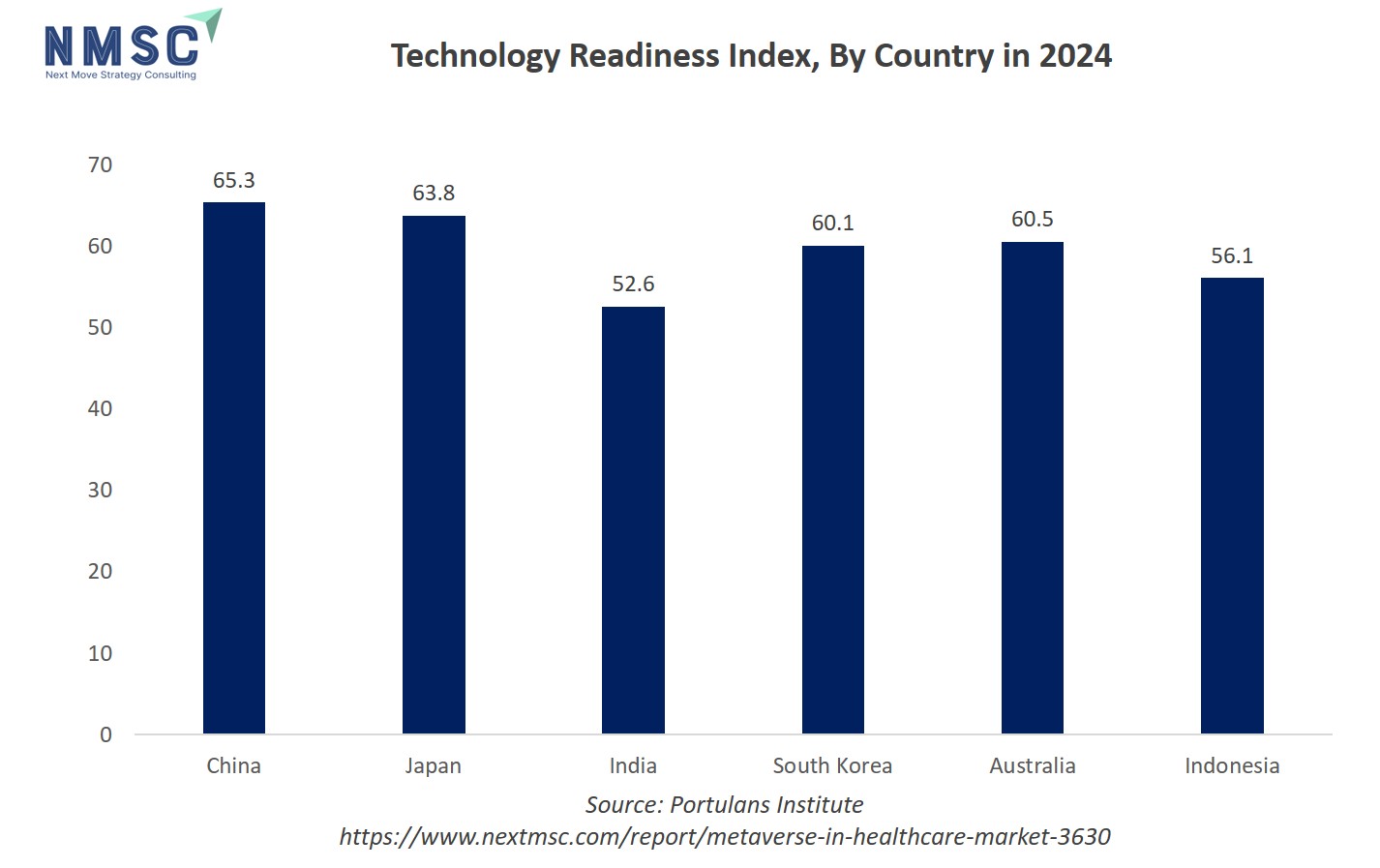
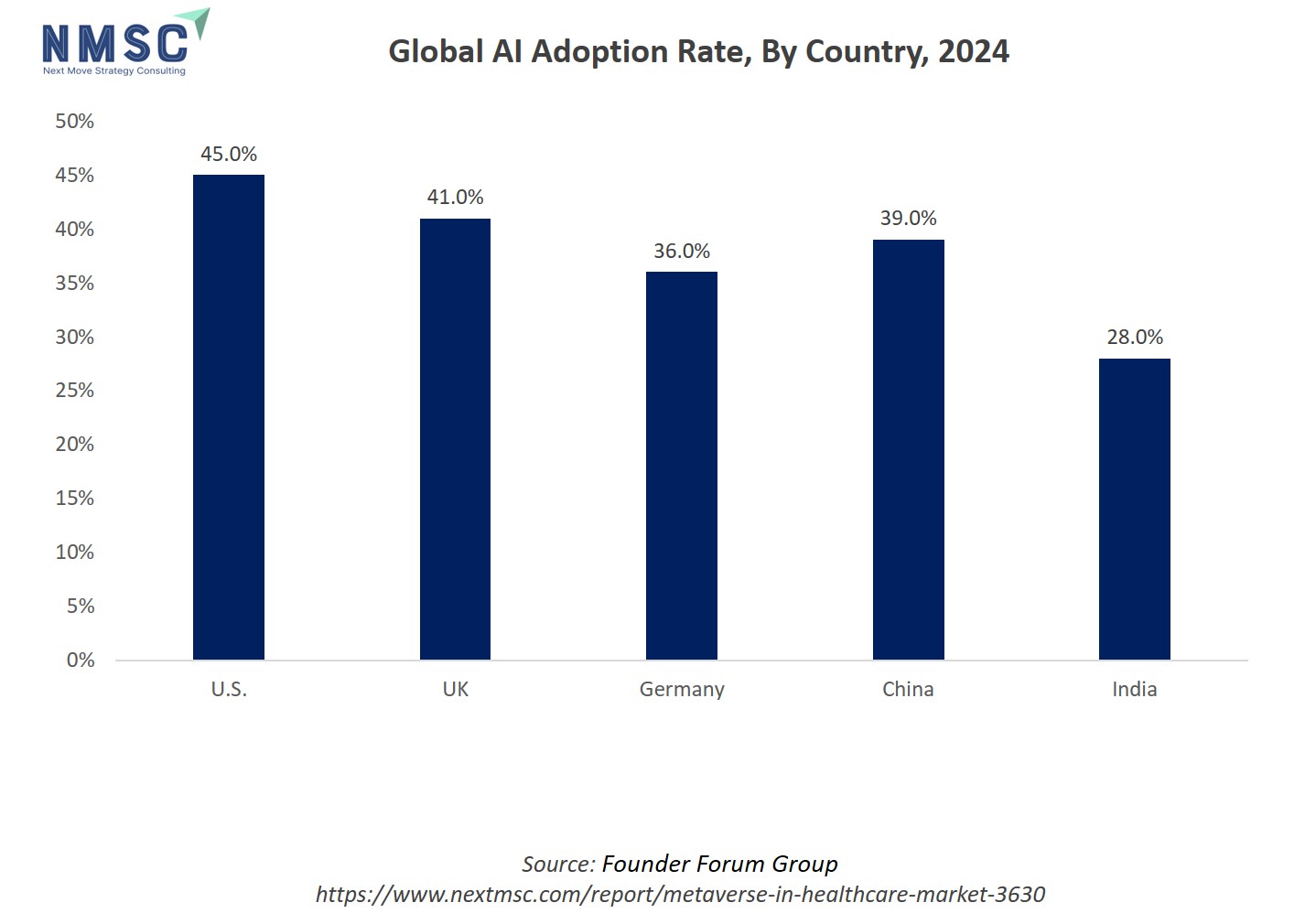
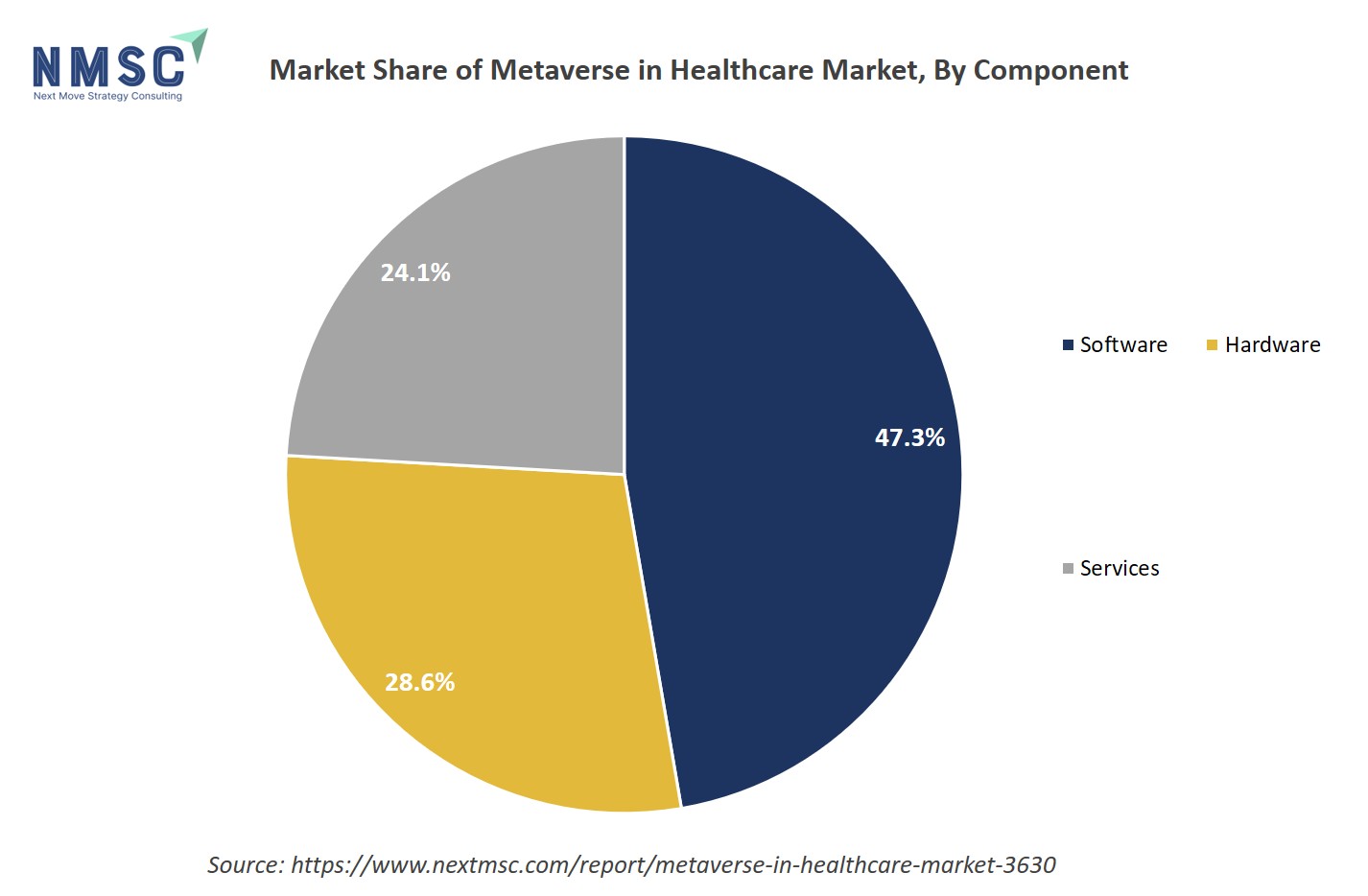
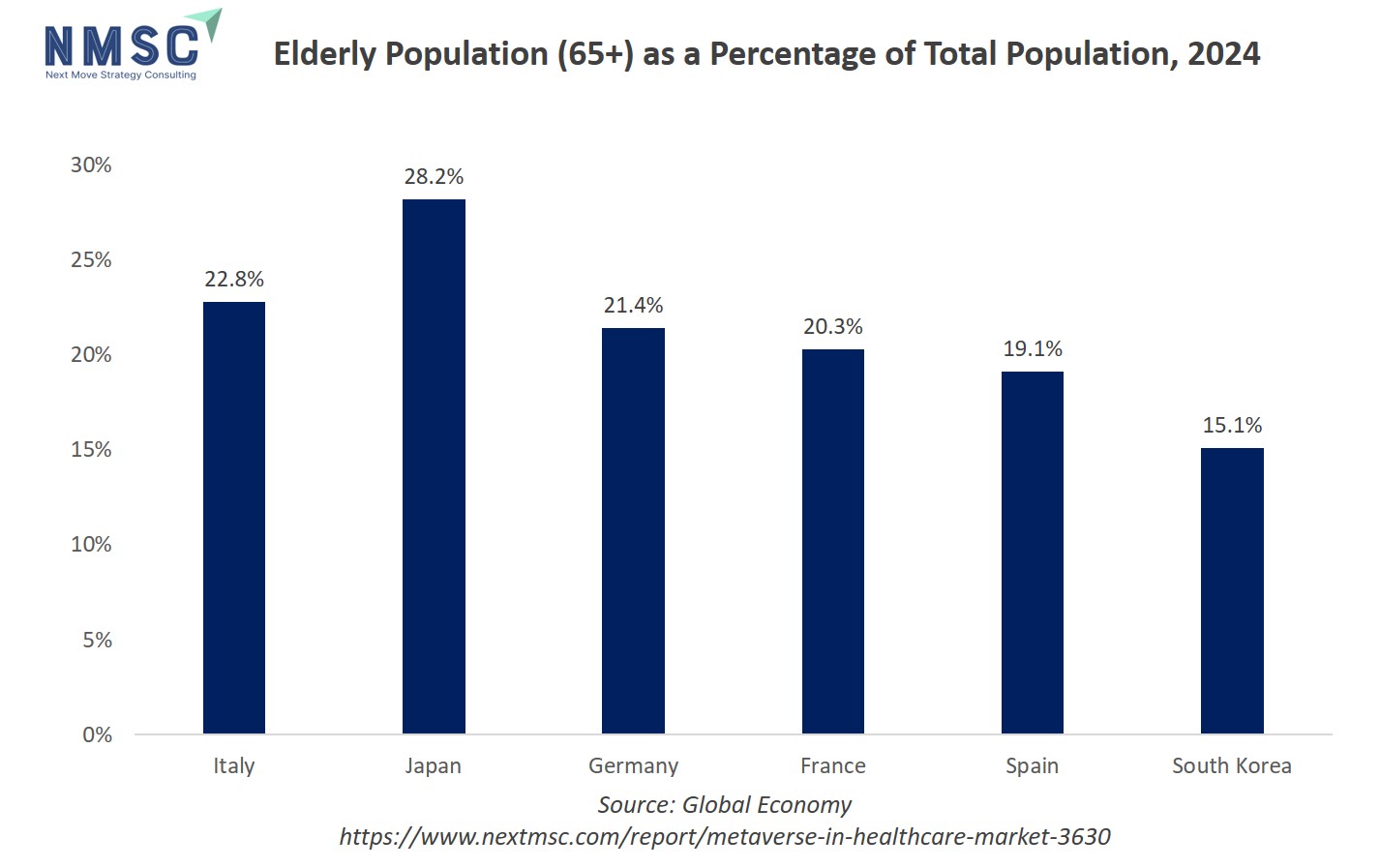

















 Speak to Our Analyst
Speak to Our Analyst



